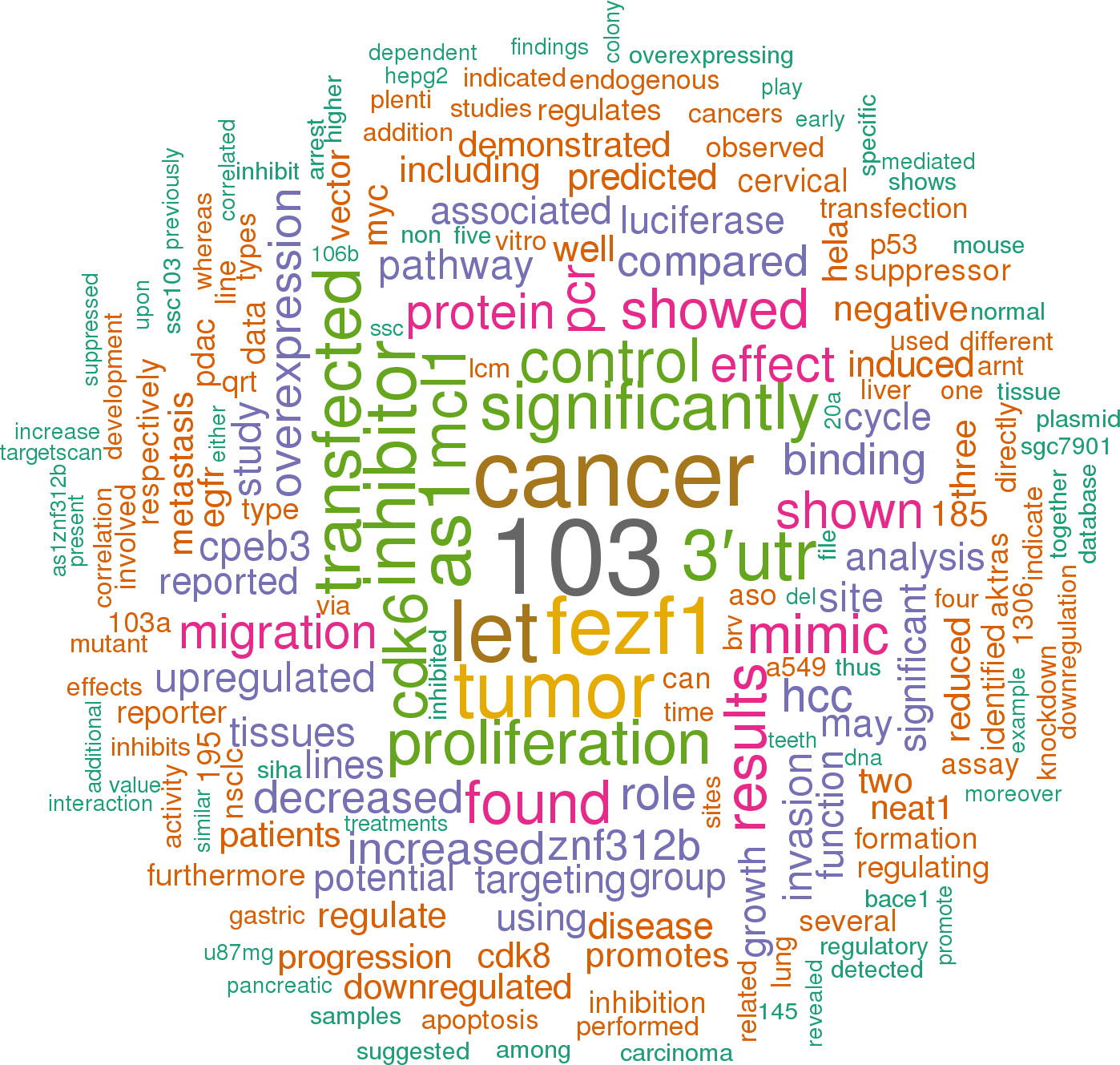Accession
MI0000114
Symbol
HGNC:
MIR107
Description
Homo sapiens
hsa-mir-107 precursor miRNA mir-103
Gene
family?
family?
RF00129;
mir-103
Summary
Caution, this is an AI generated summary based on literature. This may have errors. ?
The microRNA hsa-mir-107 has been identified as significantly upregulated in the FGD5-AS1 KD CCC-HEH-2 cell line, which could indicate its involvement in specific cellular functions within this system [PMC8144506]. This cell line originates from cholangiocarcinoma, a cancer affecting the bile ducts, and the observed upregulation of hsa-mir-107 suggests it may influence the behavior of these cancer cells [PMC8144506]. In addition, hsa-mir-107 is also recognized for its potential tumor-suppressive effects in non-small cell lung cancer (NSCLC) cells, highlighting its relevance in cancer research [PMC6981095]. The connections of hsa-mir-107 with various cancer types underscore its significance in the field of cancer biology and emphasize the need for further studies to elucidate its role and therapeutic possibilities [PMC8144506; PMC6981095]..
Literature search

185 open access papers mention hsa-mir-107
(941 sentences)
(941 sentences)
Sequence
4415819
reads,
10919
reads per million, 155 experiments
cucucugcuuucagcuucuuuacaguguugccuuguggcauggaguucaAGCAGCAUUGUACAGGGCUAUCAaagcacaga
.(((.((((((.((((.((.(((((((((((.(((.(((.....))))))))))))))))).))))))...)))))).)))
.(((.((((((.((((.((.(((((((((((.(((.(((.....))))))))))))))))).))))))...)))))).)))
Structure
c c --c u u c u a ucu ugcuuu agcu cu uacaguguugc uug ggc u ||| |||||| |||| || ||||||||||| ||| ||| g aga acgaaA UCGG GA AUGUUACGACG Aac uug g - c CUA - C - - a
Annotation confidence
High
Do you think this miRNA is real?
Comments
This miRNA was identified by homology to miR-103 [1], and later verified by cloning in human [2].
Genome context
chr10: 89592747-89592827 [-]
Disease association
hsa-mir-107 is associated with one or more human diseases in the Human microRNA Disease Database
| Disease | Description | Category | PubMed ID |
|---|
Mature hsa-miR-107
| Accession | MIMAT0000104 |
| Description | Homo sapiens hsa-miR-107 mature miRNA |
| Sequence | 50 - AGCAGCAUUGUACAGGGCUAUCA - 72 |
| Evidence |
experimental
cloned [2] |
| Database links |



|
| Predicted targets |



|
References
|



